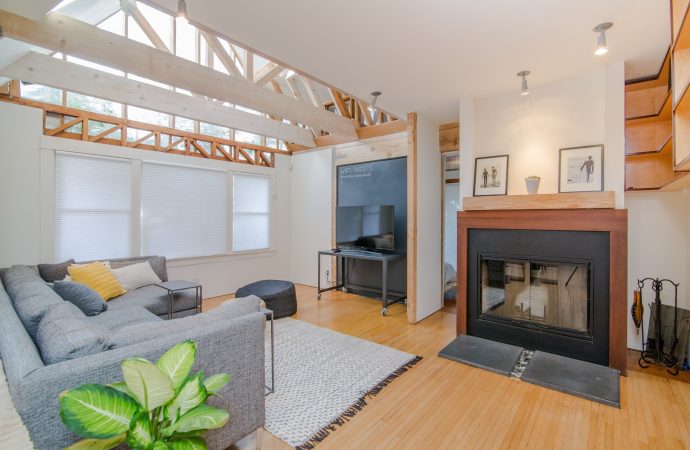As cities grow and neighborhoods change, the topic of gentrification is increasingly on everyone’s minds. Once sleepy streets are now lined with artisan coffee shops, trendy restaurants, and boutique stores. But what does it mean to live in a gentrified area? Is it all potential appreciation and cultural shifts, or are there downsides too? In
As cities grow and neighborhoods change, the topic of gentrification is increasingly on everyone’s minds. Once sleepy streets are now lined with artisan coffee shops, trendy restaurants, and boutique stores. But what does it mean to live in a gentrified area? Is it all potential appreciation and cultural shifts, or are there downsides too? In this blog post, we’ll explore both sides of the coin and delve into the advantages and disadvantages of living in a gentrified area. So grab a cup of coffee (artisan or not) and let’s dive in!
What is Gentrification?
Gentrification is the process of renovating and improving a neighborhood, typically one that is in a state of disrepair, in order to make it more appealing to higher-income residents. This often results in the displacement of lower-income residents, as well as an increase in property values and rents.
There are both advantages and disadvantages to living in a gentrified area. On the plus side, gentrification can lead to safer and more vibrant neighborhoods. Properties are improved, crime rates may go down, and new businesses may move in, providing jobs and amenities to the area. On the downside, however, long-time residents may be priced out of their homes and communities can lose their character as they become homogenized.
If you’re thinking of moving to a gentrified area, it’s important to weigh the pros and cons carefully before making a decision.
Advantages of Living in a Gentrified Area
There are many advantages of living in a gentrified area. One advantage is that there is potential for appreciation. This means that your home could increase in value over time. Another advantage is that you may experience cultural shifts. This can be a great way to learn about new cultures and meet new people. Additionally, living in a gentrified area can provide you with access to better schools, jobs, and amenities.
Disadvantages of Living in a Gentrified Area
Though there are many advantages to living in a gentrified area, there are also some disadvantages to be aware of. One of the biggest disadvantages is that living in a gentrified area can be expensive. As more people move into the area and demand for housing goes up, rents and property values often increase as well. This can price out long-time residents who may not be able to afford the new costs of living in the area.
Another disadvantage of living in a gentrified area is that it can lead to displacement of low-income residents and businesses. As property values increase, landlords may raise rents or evict tenants in order to cash in on the new market conditions. This can force long-time residents and local businesses out of the area, leading to a loss of community and social cohesion.
Finally, gentrification can sometimes result in the loss of cultural diversity in an area. As new residents move in, they may bring with them different values and lifestyles which can clash with those of existing residents. This can lead to tension and conflict within the community, as well as a homogenization of the area’s culture.
Case Studies of Gentrification
Gentrification is a hot topic in many urban areas across the United States. Some people see it as a necessary evil, while others view it as an inevitable part of progress. There are pros and cons to living in a gentrified area, and it’s important to weigh them before making a decision about whether or not to move to one.
One of the biggest advantages of living in a gentrified area is that you can expect your property value to increase. This is because gentrification often brings new businesses and higher-income residents into an area, which raises the overall desirability of the neighborhood. If you’re looking to sell your home or apartment, you can usually get a good return on investment by doing so in a gentrified area.
However, there are also some significant disadvantages to living in a gentrified area. One of the biggest is that longtime residents may be priced out of their homes as property values rise. This can lead to displacement and social upheaval, as well as a feeling of being unwelcome in your own neighborhood. Additionally, gentrification can sometimes lead to the loss of local character as new businesses move in and change the look and feel of an area.
So, what’s the verdict? Living in a gentrified area has both its pros and cons. You’ll need to decide for yourself whether the potential benefits outweigh the potential drawbacks before making a decision about whether or not to move to one.
How to Stop or Prevent Gentrification
If you’re thinking of moving to a gentrified area, or currently live in one, it’s important to be aware of the potential disadvantages as well as advantages. As with any major life decision, it’s crucial to do your research and weigh all the pros and cons before making a decision.
One of the biggest potential disadvantages of living in a gentrified area is that you could be priced out of your home or neighborhood if property values increase too much. If you’re not able to keep up with the rising costs, you could be forced to move. This can be disruptive and traumatic, especially if you’ve lived in the same place for many years.
Another disadvantage is that gentrification can lead to the displacement of long-time residents and small businesses. As new, higher-income residents move in, rents and property taxes often go up, pricing out lower-income residents who can no longer afford to live there. This can change the character of a neighborhood and make it less diverse.
There are some advantages to living in a gentrified area as well, such as an increase in property values (if you own your home) and more amenities and services becoming available. However, these advantages may not offset the potential disadvantages for some people. It’s important to carefully consider all the factors before making a decision about where to live.
Conclusion
In conclusion, living in a gentrified area can bring its own set of advantages and disadvantages. Potential appreciation can bring about more financial stability for those with the means to purchase property, but it also has the potential to cause displacement for people who cannot keep up with increasing costs. Gentrification brings new life into an area by creating job opportunities and introducing cultural shifts; however, these changes often come at a price that not everyone is able to pay.





















Leave a Comment
Your email address will not be published. Required fields are marked with *